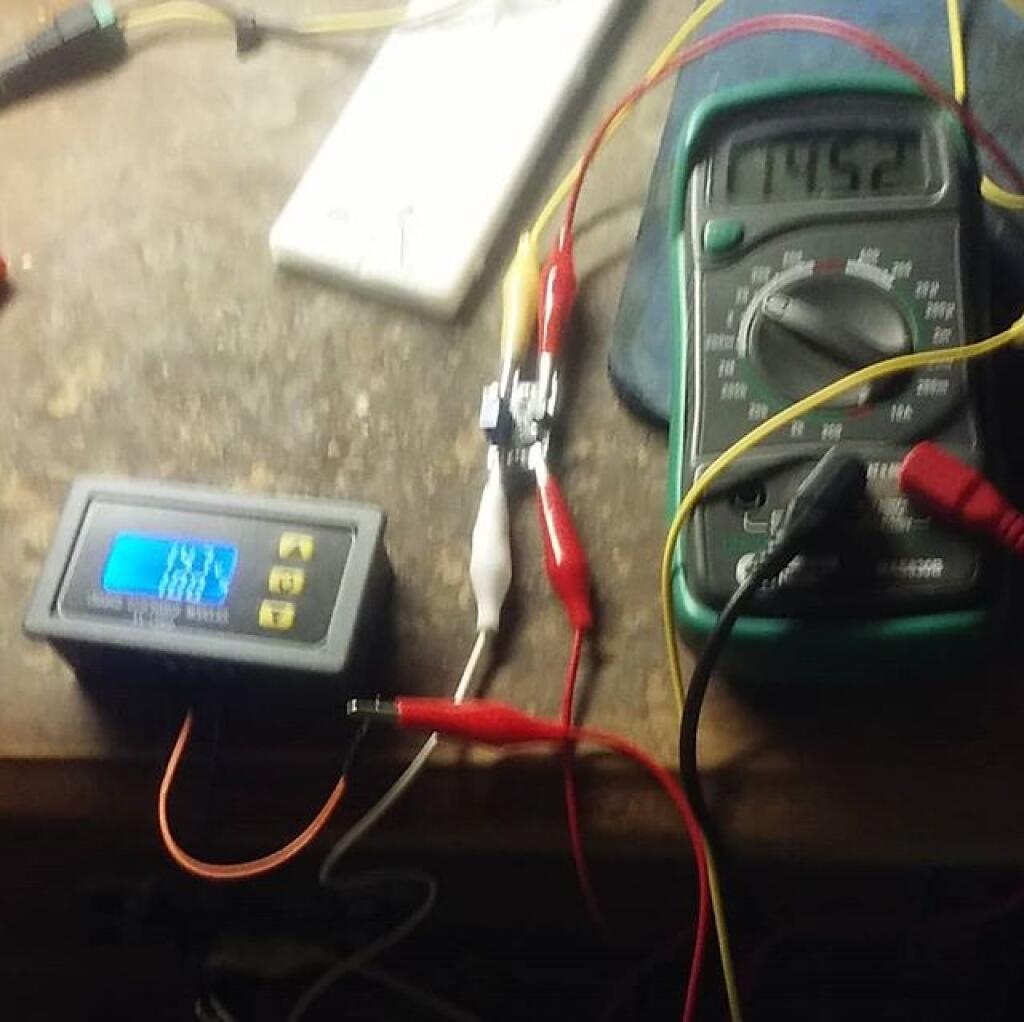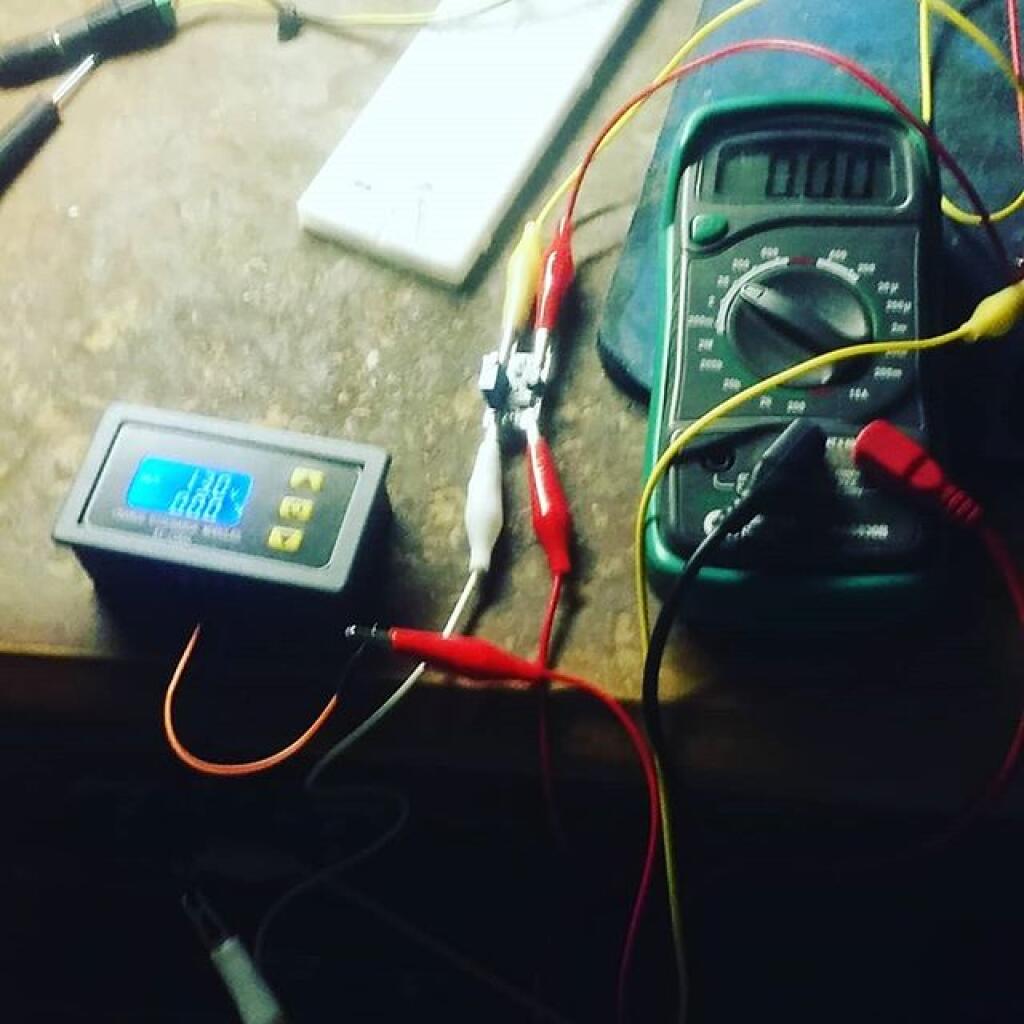December 17, 2019 Night
Good evening! Snow flurries and 28 degrees in Delmar, NY. ❄ Calm wind.There are 3 inches of snow on the ground. ☃ We ended up with a couple of inches of sloppy wet snow but not a big deal. ️But what isn’t plowed or salted will last with a big freeze coming. Things will start to thaw out at Sunday around 11 am. 🌡️
It was a very quiet day at work today, 💼and kind of a snowy commute in but the ride back home wasn’t bad but walking 🚶 down Columbia Street was a bit slick at times. But so be it. I got home, made dinner and then I hooked up the voltage switch I got from China and figured how it works. 🔌 I want to get it fully programmed and all the wires cut and ready to go before I am working outside actually connecting things up in the cold over the weekend.
I rode the excerise bike for a while 🚲 but then my neighbor came home so I stopped. I wish I could have gotten more time in on the bike and tomorrow is the Pine Bush Dinner. 🍲 I’ll walk down to the express bus 🚍 tomorrow and who knows Thursday. My neighbor usually is out Thursday night. Although John Wolcott wants me to come over, but I will see. 🔎It’s going to be super cold and I’m not crazy about walking down the Henry Johnson Viaduct when the windchill is below zero.
Tonight will have a slight chance of snow before midnight. Mostly cloudy 🌨, with a low of 22 degrees at 6am. Two degrees above normal, which is similar to a typical night around December 14th. Maximum wind chill around 18 at 5am; Northwest wind 3 to 6 mph. Chance of precipitation is 20%. In 2018, we had light snow in the evening, which became mostly clear by the early hours of the morning. It got down to 20 degrees. The record low of -9 occurred back in 1919.
Tonight will have a Last Quarter with 50% illuminated. The moon will set at 12:09 am. 🌛The sun will rise at 7:19 am with the first light at 6:47 am, which is 40 seconds later than yesterday. 🌄 Tonight will have 14 hours and 56 minutes of darkness, an increase of 19 seconds over last night.
Tomorrow will have a chance of snow showers, mainly after noon. Some of the squalls could lead to white out conditions. Partly sunny 🌦, with a high of 32 degrees at 12pm. Three degrees below normal, which is similar to a typical day around December 27th. Light west wind increasing to 8 to 13 mph in the morning. Temperatures will drop through the afternoon. Chance of precipitation is 50%. New snow accumulation of less than a half inch possible. A year ago, we had cloudy skies in the morning with more sun in the afternoon. The high last year was 30 degrees. The record high of 60 was set in 1921. 17 inches of snow fell back in 1887.❄
I am probably not going to head up north for the weekend. 🗻 It would be kind of fun to get up to the Adirondacks one more time before the end of the decade but I am pretty sure next weekend I’m going out to the Finger Lakes – its actually going to be quite mild to end out the year based on the latest predictions. I want to get that voltage switch ⚡ fully up and running and tested before I get stranded because I did something wrong. Also I think we might cut some additional video 📹 for the Rezsin Adams film on Saturday. That was off but it’s back on now.
In four weeks on January 14 the sun will be setting at 4:45 pm,🌄 which is 22 minutes and 14 seconds later then tonight. In 2019 on that day, we had partly sunny, snow showers and temperatures between 28 and 8 degrees. Typically, you have temperatures between 30 and 14 degrees. The record high of 66 degrees was set back in 1932.
Looking ahead, Coldest Week of the Year 🌬 is in 4 weeks, Martin Luther King Day 🖤 is in 5 weeks, Don’t Cry over Spilled Milk Day 🥛 is in 8 weeks, Presidents Day 👴 is in 2 months, National Drink Wine Day 🍷 is in 9 weeks, St. Patrick’s Day 🍀 is in 3 months, 7:30 PM Sunset 🌇 is in 16 weeks, Cinco de Mayo 🤠 is in 20 weeks and Pack Rat Day 🐀 is in 5 months.
Voltage switch
It seems like that voltage switch will work well for my purposes…
While I’m using it to connect the solar and accessory batteries to the starting battery, I am using it in the voltage discharge monitoring (out) mode rather than the charge mode, because that mode makes the most sense for my purposes.
The low current internal relay in the device is switched on the positive side which means that I can easily excite the big relay that is between the starting and accessory batteries. I wasn’t sure until I tested it – a lot of transistors are NPN sink current so they operate on the negative side.
Settings I’m planning on using in Out Mode:
- Upper Voltage – 14.0 (maximum is 60 volts)
- Lower voltage – 13.2 (minimum is 6 volts)
- FON (First On, aka ignore initial voltage sag due to inductive start up load) – 10 seconds (maximum is 10 seconds)
- PON (Pause On, aka delay before re-closing relay to avoid burning contacts) – 300 seconds or 5 minutes (maximum is 999 seconds or 16.6 minutes)
How it works in the out mode I’m using …
The solar panel in the sun produces a rising voltages as the accessory batteries charge. The voltage switch monitors the voltage on the accessory system until the upper voltage is reached (which I set at 14.0 volts).
At the point the upper voltage is reached, internal relay closes, which sends a positive voltage to the positive output terminal. That via an exciter wire and a diode will active the main relay in the truck connecting the starting battery to the accessory system and the solar panel.
The FON (First ON) countdown begins, displayed on the screen and ongoing for the ten seconds I set it to. The voltage switch will temporarily ignore any temporarily voltage drop during the FON interval to ensure its not accidentally shut off.
Once FON countdown is done the relay will remain closed and solar power will flow from the panel to the starting battery until the input voltage drops to the set lower voltage, which I set to 13.2 volts. Once the lower voltage threshold is reached the relay will open. The exciter line will be off and the starting battery will be disconnected from the accessory batteries to avoid discharge from accessory loads when the panel doesn’t have excess current to spare.
Once the low voltage threshold is reached, the switch enters the PON (Pause ON) mode for the 300 seconds or five minutes I set it to – and is displayed as a countdown on the screen. During this period the voltage switch will not reclose even if the voltage does once again go above 14.0 volts to protect the relay from excessive switching on and off due to variable lighting conditions or other factors that could cause the voltage to fluctuate.
After the 300 second PON delay I set is over, the voltage switch will monitor the voltage and once it’s over 14.0 volts the process starts all over again.
China English!
I do love the way they write in Chinese instruction manuals:
“This model is suitable for use in the range of minimum 6V, maximum 60V voltage and maximum expenditure level 48V, because 48V battery is full of electricity at about 60V, and then burns at a higher level. If your battery is higher than 48V, please choose another one.”
Mount Storm Lake In West Virginia Has Warm Water All Year
When I dipped my toes into the lake on a 35 degree day in October, it was warm but not that warm. I don't think I would have wanted to go for a swim. The air is always a bit cold in Mount Storm as its one of the highest locations on the Allegheny Front, as they tend to put coal plants on highest ridges around to reduce local pollution.



